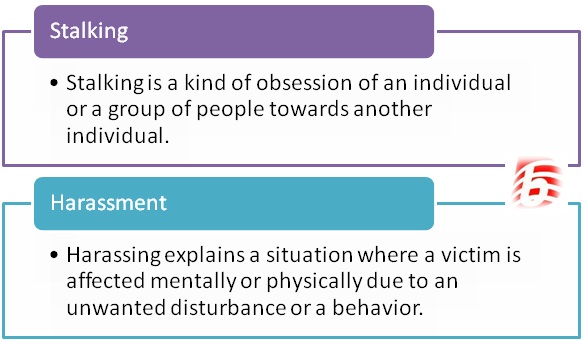Stalking vs Harassment
Before we can analyze the differences between stalking and harassment, it’s necessary to understand their individual meanings. Although both terms may seem similar, they each have distinct definitions. Harassment covers various offensive behaviors, whether verbal or physical, from an individual or a group of people towards another person or group. Stalking, in contrast, involves being a nuisance towards someone, which often includes harassment or threats. Both actions have negative impacts on the victim and are usually illegal. Let’s examine these terms in more detail.
What is Harassment?
Harassment refers to a situation where the victim is mentally or physically affected by unwanted disturbances or behaviors. These offensive actions can be repetitive and sometimes persist for a long time. Harassment is often intentional, with the perpetrator deriving pleasure or satisfaction from the act. Harassment can cause significant discomfort to the victim, and in some cases, it may go unreported due to social and cultural issues. This is especially true for sexual harassment, which can occur in workplaces where victims fear losing their job if they speak up. Harassment can take many forms, including workplace, mobile, online, racial, religious, and psychological harassment.
In most countries, harassment is illegal, and laws have been established to protect against it.
What is Stalking?
Stalking also involves a situation where the affected party suffers mentally or physically due to unwanted actions or a series of actions. Stalking is a kind of obsession, wherein an individual or a group of people continuously follow, monitor, or gather information about another individual. The observation and monitoring involved in stalking can sometimes go unnoticed, but if the affected party feels threatened or scared, legal action may be taken against the stalker. Laws related to stalking are generally quite strict.
At first, stalking may be legal, such as when a person follows another person to gather information. However, if the stalker begins to act annoyingly or threateningly, it may become illegal. For example, sending an SMS to an unknown person for fun is not illegal, but continuously sending threatening messages would be considered stalking.
Key Takeaways
- Both stalking and harassment involve intentional, harmful actions that can negatively impact the victim mentally or physically.
- Harassment often involves physical actions and can affect an individual or a group of people, while stalking typically involves continuous monitoring or following and usually targets just one individual.
- Both stalking and harassment are illegal, and laws have been established to protect against these actions.
